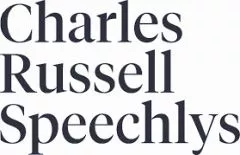In the 'touch screen' battle between Apple Inc and the Taiwanese manufacturer HTC, the High Court has ruled in favour of HTC. However, the trial judge was critical of the reading and trial time estimates, which he said were completely unrealistic, and said a pre-trial review should have been held.
The proceedings concerned four patents owned by Apple Inc ("Apple"), European Patents Nos. 2 098 948 (the "948 Patent"); 2 964 022 (the "022 Patent"); 2 059 868 (the "868 Patent") and 1 168 859 (the "859 Patent"). HTC Europe Co. Ltd ("HTC Europe") commenced revocation proceedings for three of the patents. Apple sued HTC Corporation ("HTC Corp") for infringement of the patents which were the subject of the revocation proceedings. HTC Corp then counterclaimed for revocation of the fourth patent. (HTC Europe and HTC Corp are referred to as HTC below.)
The 948 Patent (touch event model)
Apple's 'touch event model' patent, concerned with computer devices with inputs which are multi-touch enabled, capable of responding to more than one touch at the same time, was ruled invalid by the judge. Mr Justice Floyd found claim 1 of the patent invalid for both obviousness over common general knowledge and excluded subject matter while claim 2 was found invalid for excluded subject matter only. In any event, so far as infringement was concerned, Floyd J held that the 948 Patent was not infringed by the HTC devices. [Paragraphs 21 - 99]
The 022 Patent (the 'slide to unlock' feature)[paragraphs 100 - 241]
Apple's 'slide to unlock' feature patent is entitled "Unlocking a device by performing gestures on an unlock image" and is concerned with the provision of a user interface on a touch screen device which enables the user to change the state of the device by, for example, dragging an image over the screen. Apple commercialised this invention as the 'slide to unlock' feature of its iPhone which the user of the iPhone encounters on first use.
Computers had been able to recognise human input via touch for many years before the priority date and touch sensitivity is achievable by many different technologies. The human input may be by stylus, pen, finger or hand. A number of touch screen devices had been on the market for a number of years before the priority date of 23 December 2005.
While Apple used the 'slide to unlock' feature, HTC used the 'Arc unlock' mechanism.
Floyd J held that HTC's 'Arc unlock' mechanism would have infringed Apple's 'slide to lock' feature patent had Apple's invention not been "obvious". All claims were found obvious in light of prior art and certain claims were anticipated by prior art. In particular, a mobile telephone, Neonode N1, first introduced into Europe in 2004, also had an unlock mechanism ('sweep to unlock'). Floyd J concluded that Apple had further worked on and developed the Neonode N1 unlock feature using technology it was aware of at that time, which included a 'slider' called the Microsoft Windows CE Slider:
"I consider that it would be obvious to the skilled team, faced with the lateral-swipe arrow unlock of Neonode, that it could be improved by the provision of feedback. The skilled team would be aware that visual feedback for a lateral gesture could be provided by the extremely familiar sliders from his common general knowledge, such as the Windows CE slider. It is true that this simple improvement was not done by Neonode. This is a secondary consideration which may in some circumstances support a case of inventiveness. On its own, which it would be in this case, it is of little weight." [Floyd J]
The 868 Patent (portable electronic device for photo management)[paragraphs 242 - 280]
It was held that Apple's 868 Patent was valid, but the court found that HTC had not infringed the patent.
The 868 Patent related to photo management. Apple claimed that HTC's photo application, Gallery, infringed Apple's patent. In his finding of non-infringement, Floyd J concluded:
"The finding of non-infringement seems to me simply to reflect the fact that the patent is not directed to full screen mode, and in zoomed-mode claims a specific way of reacting to the fact that the edge has been reached during a gesture. HTC's method in zoomed-in mode reacts to the fact that the edge has been reached in a significantly different way." [Floyd J]
The 859 Patent (portable radio communication apparatus using different alphabets)[paragraphs 281 - 359]
Floyd J held that Apple's 859 Patent was invalid on the grounds that it was obvious. The patent related to SMS capability. All claims were held to be invalid over the prior art. If valid, it would have been infringed by the HTC devices.
At the end of his judgment, Floyd J commented on the seriously inaccurate trial estimate (6 - 8 days), given that there were four patents at issue, all of significant commercial importance to the parties. Both parties had filed voluminous expert evidence. The reading time estimate was considered to be completely unrealistic by Floyd J. In addition the circumstances of the case warranted a pre-trial review and the parties should have appreciated that the case would last ten days or more.
At any pre-trial review, the court would have reviewed the state of preparation of the case, and could well have given directions as to how the case was to be tried, including directions as to the order in which witnesses were to be called or as to the time to be allowed for particular stages in the trial - which may well have saved costs.
The case has been described as a resounding 'win' for HTC - and certainly will be regarded by those seeking to use touch screen technology as a significant 'loss' for Apple.
The content of this article is intended to provide a general guide to the subject matter. Specialist advice should be sought about your specific circumstances.


